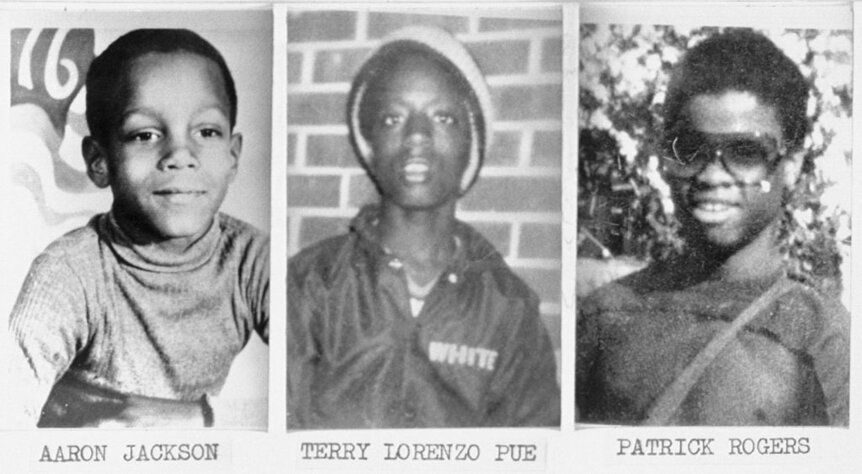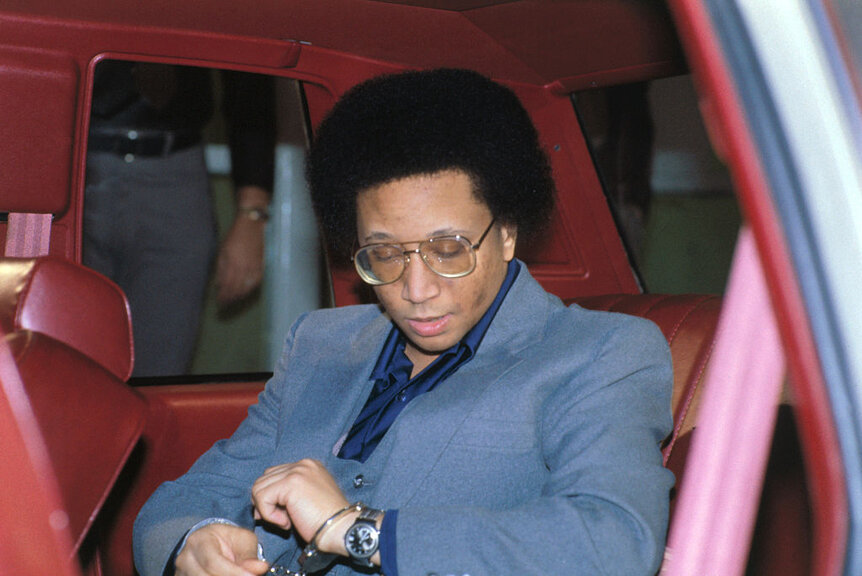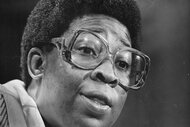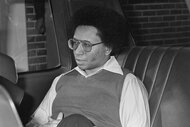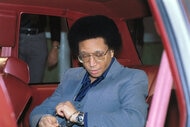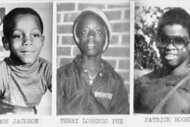Create a free profile to get unlimited access to exclusive videos, breaking news, sweepstakes, and more!
Everything You Need To Know About The Atlanta Child Murders Ahead Of ‘Mindhunter’ Season 2
The Atlanta Child Murders haunted the city of Atlanta for two years between 1970 and 1981 as the bodies of dozens of African American children were found all over the city.
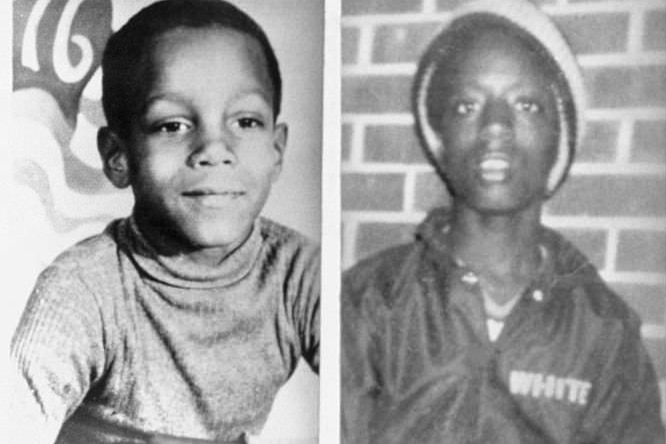
While you eagerly await the release of the second season of ‘Mindhunter,’ you can get familiar with some of the real-life killers the season will be focusing on. The fictional show, which centers around 1970s FBI agents Holden Ford and Bill Tench as they interview and profile serial killers is expected to focus on the Atlanta Child Murders during its second season.
If you don’t know much about the Atlanta Child Murders, get up to speed before the next season uploads on Netflix. Though it’s not clear when that will be, it has been hinted that it will be in late 2018 or early 2019. It appears that the second season is still in production.
The Atlanta Child Murders haunted the city of Atlanta for two years between 1979 and 1981 as the bodies of mostly African American children were found all over the city. It became "one of the most publicized manhunts in American history, politicizing a town and polarizing a nation, every step of the investigation steeped in bitter controversy," according to the book "Mind Hunter: Inside the FBI's Elite Serial Crime Unit," which the show is based on. Here’s everything you need to know about the case.
There were between 28 and 29 victims
Between 1979 and 1981, about 29 children, teens, and young adults were found murdered around Atlanta. The majority of the victims were boys and most of the crime scenes shared common details, according to the FBI.
The first victims
Edward Hope Smith and Alfred Evans, aged 14, disappeared four days apart in 1979. Both their bodies found on July 28 in a wooded area. Edward had been shot to death in his upper back. Evans’ cause of death was not released. In September, the third victim 14-year-old Milton Harvey, went missing while running an errand for on his 10-speed bike. His bike was found a week later and his body was discovered two months later. Days before his body was found, the body of 9-year-old Yusef Bell, was found in the crawl space of an abandoned elementary school. He had been strangled to death.
Racial tension
According to an episode of “Great Crimes & Trials,” a BBC documentary television series, local police were criticized for making too little effort in solving the murders and they were accused of not putting in a desired amount of effort because the victims were black and from lower-income homes. Then, in 1980, a boiler exploded inside a daycare center in a predominantly black, low-income housing project. Five people were killed, including four children, United Press Industry reported. There was speculation at the time that the explosion may have been the work of the same person responsible for killing children in the area, according to the BBC Documentary “Great Crimes & Trials.”
The task forces
The parents of the other missing and slain children formed the Committee to Stop Children's Murders. They suspected a serial killer, but police didn’t believe them at first. According to a 2010 CNN documentary devoted to the murders called "The Atlanta Child Murders," victims’ parents felt the police weren’t taking them seriously. At least one felt like police accused them of overreacting. In 1980, after nine children were murdered, five Atlanta police investigators were assigned to a special task force created the public safety commissioner called the Missing and Murdered Task Force to investigate the case. This task force eventually expanded to include over 50 investigators. In 1980, a year after the murders began the FBI joined the investigation.
Debate over the suspect’s race
Initially, it was theorized that the killer could be a white person targeting African Americans. For a while, police were investigating the Ku Klux Klan. As noted in "Mind Hunter: Inside the FBI's Elite Serial Crime Unit," the FBI eventually discounted the theory because they concluded that hate crimes are a more visible crime; if it was the KKK, they would be doing in a way to make a public, visible statement. The FBI later concluded that he had to have been a black man to maneuver his way through the more predominantly black neighborhoods and to gain the trust of the victims.
"A white individual, much less a white group, could not have prowled these neighborhoods without being noticed," former FBI agent John E. Douglas wrote in "Mind Hunter: Inside the FBI's Elite Serial Crime Unit."
Dozens of child victims
Angel Lanier, 12 was found dead, strangled and tied to a tree in March, 1980 just months before 15-year-old Eric Middlebrooks was found bludgeoned to death. The body of Anthony Bernard Carter, 9, was found in a warehouse area, stabbed to death in the summer of the same year. Clifford Jones, 13, was strangled and left in a dumpster in the back of a shopping center. His body was found in August. Charles Stevens, 12, was found dead from asphyxiation in Oct. 1980 near a mobile home park. Aaron Jackson Jr., 9, was also found asphyxiated and dead a month after Stevens. His body was found on a riverbank. Terry Lorenzo Pue, 15 had been strangled and left near an interstate in January, 1981. The skeletal remains of 11-year-old Christopher Richardson and Earl Lee Terrell, 10, was found in a wooded area in 1981. Their cause of death wasn’t determined. Latonya Wilson was just 8 when she was reportedly taken from her bed in 1981. Her body was later found in a wooded area. The cause of her death hasn’t been determined. A day after Wilson was abducted, Aaron Wyche went missing. He was later found dead from asphyxiation. Lubie Geter, 14, Curtis Walker, 15, Joseph Bell, 5, and Timothy Hill, 13 were all found dead from asphyxiation. anthony carter, 9, was found stabbed to death and Clifford Jones, 13, Terry Pue, 15, Patrick Baltazar, 11 and William Barrett, 17 were found dead, victims of strangulation. One potential victim has never been found: Darron Glass, 10 was never found.
Handful of adult victims
Children weren’t the only targets. Eddie Duncan, 21, Larry Rogers, 20 were found dead by strangulation. Michael Mcintosh, 23, Ray Payne, 21, and Nathaniel Carter, 27 were killed by asphyxiation. John Porter, 28, was stabbed to death.
The city was paralyzed
The city of Atlanta became paralyzed with fear. Children were urged to not walk around by themselves, unsupervised. News broadcasts were warning parents to make sure their children, their sons in particular, were supervised. The phrase “It’s 10 p.m. Do you know where your children are?” was repeated nightly on local news broadcasts at the time, a sobering reminder to parents that someone was out there, preying on children. According to the podcast “Atlanta Monster,” the case turned the already existing catchphrase into an ominous one.
The suspect
Wayne Bertram Williams, a 23-year-old African American man, first entered investigators’ radar during a police stakeout on May 22, 1981. One officer heard a splash in a river beneath a bridge he was watching. Another officer saw a white 1970 Chevrolet station wagon turn around and drive back over the bridge. Williams was questioned and let go, but from here forward he was watched by police very closely. Two days after the splash in the river, police found the body of Nathaniel Cater, 27, floating just a few miles from the bridge.
The suspect’s hobbies
At age 12, Williams built and set up his own radio station, according to the episode of “Great Crimes & Trials” dedicated to the Atlanta Child Murders. One of the guests on his show was a local congressman. As an adult, he was a police buff who was once arrested for impersonating an officer, according to "Mind Hunter: Inside the FBI's Elite Serial Crime Unit." Later, he worked as a freelance photographer reminiscent of the character from the fictional 2014 film "Night Crawler." He would get footage and photos of car accidents by listening to police scanners and sell them to local news outlets. More recently, Williams fancied himself as a music talent scout. According to a documentary, he was interviewing young boys to create the next “Jackson 5.” He’d reportedly approach kids at schools asking if they wanted to be in his band “Gemini” named after his astrological sign. At least one Atlanta Child Murders victim had auditioned for him.
The arrest and trial
After weeks of interrogation and surveillance, Williams was arrested and charged with the murder of Nathaniel Cater, the latest victim in the string of 28 killings. On Feb. 27, 1982, he was found guilty of murdering Cater and Jimmy Ray Payne. He was sentenced to two consecutive life prison terms. He was never charged in the other murders but police said they have linked him to at least 20 of the victims. In 2005, the case files of several of the murdered children were reopened.
Williams has maintained his innocence
Since his arrest, Williams has maintained that he’s not a serial killer and that he’s not the man behind the murders. "The Atlanta Child Murders, " a five-hour CBS 1985 miniseries criticized the prosecution of Williams. More recently, a 10-episode podcast entitled “Atlanta Monster,” debates the innocence of Williams. He is still alive, still in jail, and still claims to be innocent.
[Photos: Getty Images]
